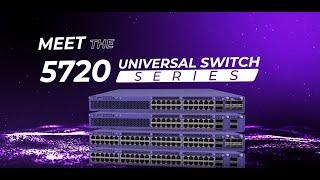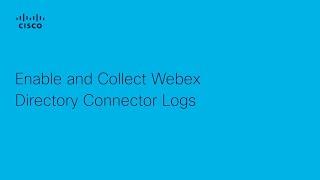Let’s recap our first WiFi Performance Expert’s Corner, where we talked about advertised WiFi air speed vs. real-world WiFi speed, and why they are so drastically different.
Compared to wired full-duplex Ethernet, WiFi is half-duplex in nature — meaning it cannot send and receive data simultaneously. So, advertised WiFi air speed is shared by uplink and downlink activity.
And while wired Ethernet is specified in terms of payload speed, WiFi air speed includes protocol overhead that can account for nearly 50% of the total transmission.
WiFi speed can decline further — even significantly so — depending on the utilization of the WiFi network and environmental interference. That’s why real-world wired Ethernet speed matches its specification, while in the WiFi world, real-world speed is typically just a fraction of the advertised air speed.
Up until now, the key focus of professional WiFi network design has been minimizing channel interference to maximize real-world speeds.
However, with the opening of the 6 GHz band which triples total available WiFi spectrum, a shift is taking place.
New client devices that support 6 GHz, whether they’re WiFi 6E or 7, now have so much interference-free spectrum available that the traditional design focus of careful planning using narrow channel widths is being ushered away in favor of a new design philosophy that encourages wider spectrum utilization. Practically, this means deploying APs with 6 GHz radios to aggressively offload all 6 GHz capable client devices onto wider, interference-free channels in the new 6 GHz band.
The introduction of WiFi 7 further accelerates this trend towards maximum spectral utilization through three key new features.
First is the doubling of maximum channel width from 160 MHz to 320 MHz. A single 320 MHz channel can deliver an insane 5.7 Gbps air speed with just two spatial streams! That translates to real-world speeds that can saturate a 2.5 gigabit Ethernet link.
Next is Multi-Link Operation, or MLO, which takes the concept of an AP’s independent 2.4, 5, and 6 GHz radio channels and essentially creates a single unified “super channel” by combining all of their spectrum together. WiFi 7 clients can connect to this entire “super channel” across all three bands at once for massive bandwidth and impressive low-latency performance.
The third breakthrough is called puncturing, which allows this “super channel” to operate non-continuously and essentially “notch” out noisy interferers. When combined with MLO, puncturing provides ultimate high availability without any speed compromises — delivering a wired-like experience to WiFi users.
UniFi offers multiple 6 GHz WiFi design options. Our U6 Enterprise APs have 10 spatial streams for exceptional performance with both WiFi 6 and 6E devices. And we just introduced UniFi 7, starting with the U7 Pro — a 6 spatial stream AP great for existing WiFi 6 and 6E devices, while also “future proof” to unlock the incredible benefits of WiFi 7 as more WiFi 7 clients devices get connected.
Compared to wired full-duplex Ethernet, WiFi is half-duplex in nature — meaning it cannot send and receive data simultaneously. So, advertised WiFi air speed is shared by uplink and downlink activity.
And while wired Ethernet is specified in terms of payload speed, WiFi air speed includes protocol overhead that can account for nearly 50% of the total transmission.
WiFi speed can decline further — even significantly so — depending on the utilization of the WiFi network and environmental interference. That’s why real-world wired Ethernet speed matches its specification, while in the WiFi world, real-world speed is typically just a fraction of the advertised air speed.
Up until now, the key focus of professional WiFi network design has been minimizing channel interference to maximize real-world speeds.
However, with the opening of the 6 GHz band which triples total available WiFi spectrum, a shift is taking place.
New client devices that support 6 GHz, whether they’re WiFi 6E or 7, now have so much interference-free spectrum available that the traditional design focus of careful planning using narrow channel widths is being ushered away in favor of a new design philosophy that encourages wider spectrum utilization. Practically, this means deploying APs with 6 GHz radios to aggressively offload all 6 GHz capable client devices onto wider, interference-free channels in the new 6 GHz band.
The introduction of WiFi 7 further accelerates this trend towards maximum spectral utilization through three key new features.
First is the doubling of maximum channel width from 160 MHz to 320 MHz. A single 320 MHz channel can deliver an insane 5.7 Gbps air speed with just two spatial streams! That translates to real-world speeds that can saturate a 2.5 gigabit Ethernet link.
Next is Multi-Link Operation, or MLO, which takes the concept of an AP’s independent 2.4, 5, and 6 GHz radio channels and essentially creates a single unified “super channel” by combining all of their spectrum together. WiFi 7 clients can connect to this entire “super channel” across all three bands at once for massive bandwidth and impressive low-latency performance.
The third breakthrough is called puncturing, which allows this “super channel” to operate non-continuously and essentially “notch” out noisy interferers. When combined with MLO, puncturing provides ultimate high availability without any speed compromises — delivering a wired-like experience to WiFi users.
UniFi offers multiple 6 GHz WiFi design options. Our U6 Enterprise APs have 10 spatial streams for exceptional performance with both WiFi 6 and 6E devices. And we just introduced UniFi 7, starting with the U7 Pro — a 6 spatial stream AP great for existing WiFi 6 and 6E devices, while also “future proof” to unlock the incredible benefits of WiFi 7 as more WiFi 7 clients devices get connected.
- Category
- Ubiquiti
- Tags
- ubiquiti, unifi, unifi store
Be the first to comment



![Ubiquiti Insider: UniFi Dream Router | UniFi Network 7.1 | UNVR Stacking [May 2022]](https://www.networkingvideos.com/templates/apollo/img/melody-lzld.png)


